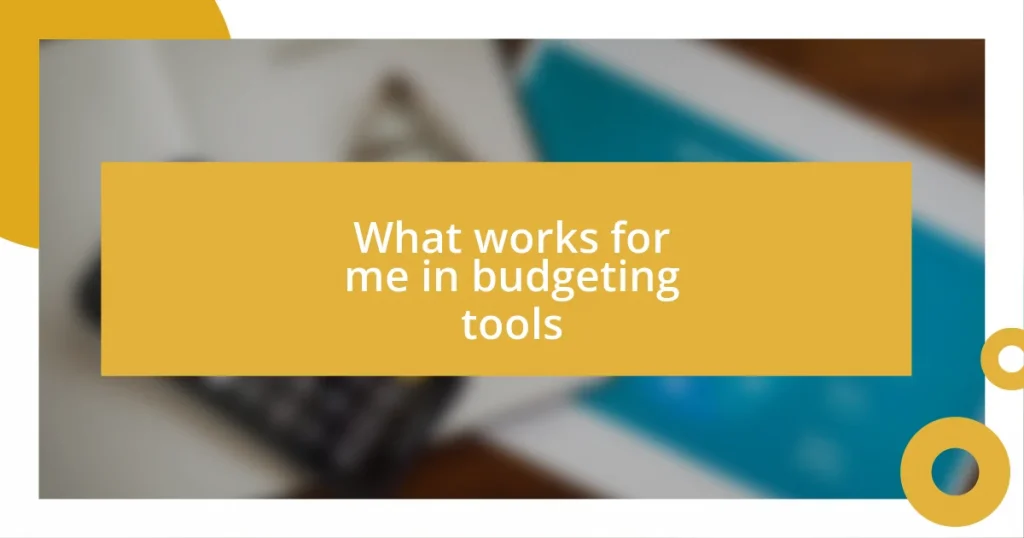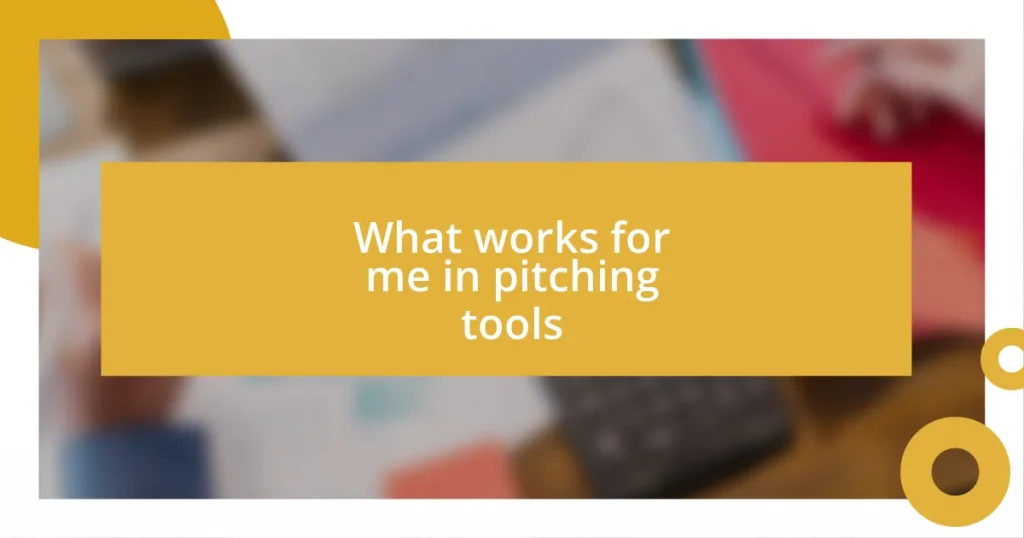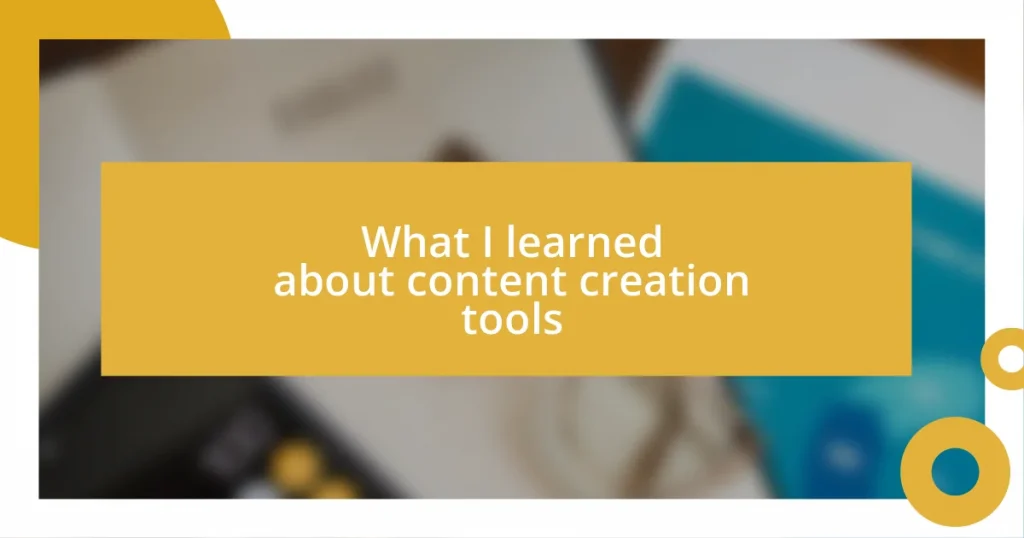Key takeaways:
- Funding rejections are often due to factors beyond the project’s worth; constructive criticism can provide valuable insights for improvement.
- Building resilience and nurturing relationships through networking can turn setbacks into opportunities for growth and collaboration.
- Rejection can spark creativity and innovation, leading to refined projects and unexpected partnerships that enhance prospects for success.

Understanding funding rejections
Funding rejections can feel like a personal blow, especially when you’ve poured your heart into your vision. I remember the sting of my first rejection; it felt like my ideas were dismissed before they even had a chance to shine. Have you ever felt that way? It’s a common experience in the pursuit of financial support, and understanding why it happens can empower you moving forward.
Many times, rejections stem not from the worth of your project, but from the funders’ current priorities or their specific criteria. I once received feedback that my proposal lacked clarity in certain areas, and while initially disheartening, it became a pivotal moment for growth. Are there aspects of your proposal that could be clearer? Embracing constructive criticism can turn a rejection into a valuable learning opportunity.
Emotionally, the process can be tough. Each rejection chips away at your confidence, but it also strengthens your resolve. I often think about how persistence can lead to eventual success, and I remind myself that every ‘no’ is one step closer to a ‘yes.’ This mindset shift has shaped my approach and resilience in the face of adversity. How do you cope with setbacks in your journey?

Analyzing the feedback received
Analyzing feedback is vital in transforming setbacks into stepping stones. I still remember in particular when one funder pointed out that my budget was overestimated. At first, I felt defensive, but then I realized this was a chance to analyze my financial projections more closely. Losing that initial emotional response allowed me to view the feedback as a roadmap to creating a more realistic budget for future proposals.
Moreover, I’ve learned to categorize feedback into actionable and non-actionable items. For instance, if someone comments on my presentation style, that’s subjective and might not need major changes. On the other hand, if multiple reviewers highlight gaps in my project’s impact measurement, that’s something I should seriously address. This distinction has helped me sift through the noise and focus on what matters. When you think about your past feedback, can you identify which areas to prioritize for change?
Ultimately, the key is to approach feedback with an open mind. Each comment holds the potential to refine my approach and strengthen my proposals. I always remind myself that the patterns in feedback can reveal blind spots I might not see otherwise. Have you ever taken a step back and noticed recurring themes in the feedback you’ve received?
| Type of Feedback | Actionable Steps |
|---|---|
| Budget overestimation | Re-evaluate financial projections |
| Subjective presentation style | Focus on confidence-building |
| Impact measurement gaps | Develop a coherent evaluation strategy |

Developing resilience and persistence
Developing resilience in the face of funding rejections has been one of the most transformative experiences for me. When I received my first significant rejection, I felt an overwhelming sense of defeat, but gradually, I learned to view those ‘no’s as necessary milestones on my journey. They became reminders that the path to success is rarely linear; it’s often a winding road filled with obstacles. Fostering persistence means not only accepting these challenges but also actively seeking ways to grow from them.
- Each rejection taught me to adapt my approach and refine my goals.
- I found strength in reflecting on what I truly wanted from my proposals.
- Surrounding myself with supportive peers encouraged me to keep pushing forward.
- I started to set smaller, achievable milestones that celebrated progress, no matter how minor.
- Ultimately, developing this resilience made me more determined to pursue my vision, regardless of initial setbacks.
Looking back, I’ve realized that resilience isn’t just about bouncing back; it’s about evolving and cultivating a deeper commitment to what I believe in. I recall one instance when an investor told me there was potential in my idea, but it needed further development. At that moment, instead of feeling defeated, I felt a flicker of hope. It’s these moments that fuel persistence; they remind me not to give up, even when it feels easier to walk away. The struggle might be tough, but resilience can transform rejection into a stepping stone for growth. How has resilience influenced your journey?

Improving my pitch strategy
Sharpening my pitch strategy has been an eye-opening journey. After facing several rejections, I realized that my initial pitches often sounded more like a sales pitch than a compelling narrative. I started incorporating storytelling elements that resonated emotionally with my audience. For instance, I began to share personal anecdotes about why I’m passionate about my project. This shift allowed me to connect better with funders, making them more invested in my vision.
I also began practicing with peers and mentors, gathering their feedback before meeting with funders. One particularly tough session revealed that I was using jargon that could alienate my audience. Eliminating unnecessary complexity helped me present my ideas clearly. Have you ever gauged how well your audience understands your message? I found that simplifying my language increased engagement and made my proposals more relatable.
Lastly, I learned the invaluable skill of tailoring my pitches. Initially, I created a one-size-fits-all approach, but I soon realized that each funder has unique interests and priorities. I made it a habit to research their goals and previous funding decisions. This personalized touch guided me to align my proposal with their vision, making it a collaborative effort rather than a mere request for money. Adaptability truly became my ally, transforming each pitch meeting from a challenge into an opportunity. What adjustments can you make to better resonate with your potential backers?

Networking and building relationships
Building relationships through networking has profoundly impacted my journey in overcoming funding rejections. I remember attending a conference where I felt out of place among seasoned entrepreneurs. Yet, I seized the moment, reached out to strangers, and shared my vision. To my surprise, one of these connections later offered invaluable advice on refining my pitch, proving that genuine interactions can lead to unexpected support. How often do we underestimate the power of a simple conversation?
I’ve become increasingly aware that networking isn’t merely about exchanging business cards; it’s about nurturing meaningful connections. Following a particularly tough rejection, I found comfort in reaching out to mentors and peers who understood the landscape. Their empathy provided solace and practical suggestions that rejuvenated my motivation. This experience taught me that fostering relationships can transform moments of despair into opportunities for growth. Have you considered who might be in your corner to support you through challenges?
Moreover, I’ve learned that consistent follow-ups with new contacts can yield significant rewards. After meeting someone at a networking event, I made it a point to send a thank-you message and share updates on my project. This small gesture often sparks ongoing conversations that keep doors open for future opportunities. Reflecting on these experiences, I realize that by investing in relationships, I not only enhance my network but also create a supportive community that encourages resilience and shared growth. How can you take small steps to cultivate your own connections?

Finding alternative funding sources
Finding alternative funding sources often felt daunting after numerous rejections. However, my perspective shifted when I began to explore community grants and local business competitions. I remember applying for a small grant offered by my town, which not only led me to much-needed funds but also connected me with local entrepreneurs sharing similar challenges. Have you considered what local opportunities might be waiting for you just around the corner?
Additionally, I delved into online crowdfunding platforms, and that was a revelation. I initially hesitated to share my project publicly, fearing judgment. However, when I finally took the plunge, it was heartwarming to see how many people rallied around my idea. Their support ignited a sense of community and collaboration I hadn’t anticipated. Could crowdfunding be a way for you to not only find funds but also gather a tribe of champions for your cause?
The exploration didn’t stop there. I began seeking out angel investors who shared a passion for my project’s mission. After attending several pitch events, I realized I could leverage my network to make those connections. One evening, I met an investor at a casual meetup who was genuinely interested in sustainability, just like me. Our conversation opened doors I never knew existed. What unexpected conversations could lead you to fresh funding sources?

Transforming rejection into opportunity
Transforming funding rejection into opportunity is a journey I’ve deepened over time. I distinctly recall a particularly disheartening rejection that left me questioning my capabilities. Instead of wallowing, I channeled my frustration into a brainstorming session with friends. This casual conversation sparked an entirely new idea for my project—one that ultimately garnered more interest and support than I ever imagined. Have you experienced a moment where rejection led to your most brilliant idea?
It’s fascinating how rejection can shift our focus from what we lack to what we can create. After a series of denials, I decided to view each one not as a dead end but as an invitation to pivot. I remember revisiting my business strategy with fresh eyes, identifying weaknesses I hadn’t considered before. Each rejection prompted me to refine my approach, ultimately transforming my initial project into something stronger and more aligned with market needs. How often do we overlook the potential embedded in a setback?
My interactions with others during this time also reshaped my outlook. Sharing my experiences with fellow entrepreneurs revealed a shared vulnerability that connected us all. I learned that these conversations often went beyond mere commiseration—many offered fresh viewpoints that led to unexpected collaborations. One partnership, born from a simple discussion of our respective rejections, flourished into a thriving joint venture. Have you thought about how your challenges might open doors to new alliances?















